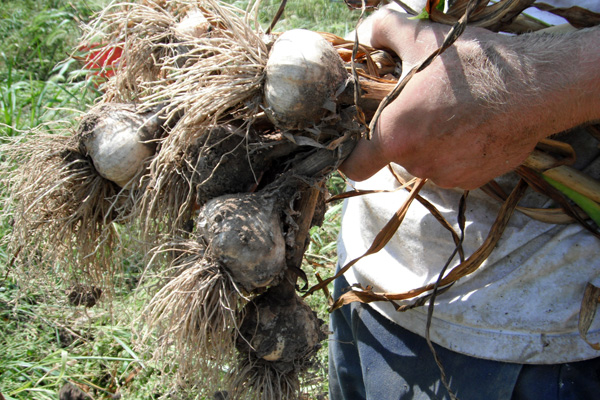-

Erin Donahue -

Christina Barkanic -

Brittany Trott -

Emily Wiley -

Jessica Reilley -

Chris Raines -

Will Nichols -

Emily Reddy -

Michele Marchetti -

Michele Frank -

James Gherardi -

Kit Henshaw -

Christina and Erin -

Kim Tait -

Erin McKinney -

Steve Spanelli -

Sam Komlenic -

Katherine Taylor Grofic -

James Eisenstein -

Jamie Oberdick -

Anna Lombardo -

LacCreta Holland -

Tony Ricci -

Local Food Journey -

Laura Young -

Kristin Camplese -

Harrison's Fresh + Local -

Danielle Matalonis -

Kristine A. -

Linda Weaver -

Naomi Elle Schwartz -

Dana Stuchul -

Cara McShane -

Brittany Smith -

Jessica Illuzzi - Frosty
-

Jessica Paholsky -

James Sechrengost -

Brad Yeckley -

Maya Althouse -

Jordan Reabold -

Kim Chase -

Maria Bryant - Alexandrea Scott
Now is the time to plant garlic
Posted by Jamie Oberdick on 09/23, 2014 at 07:28 AM

Plant garlic now for results like this next year.
While you can plant garlic in the very early spring, between now and late October is the best time to get your garlic bulbs in the ground. By planting garlic now, you can get bigger, better quality bulbs next summer.
There are several basic types of garlic:
- Softneck: This variety of garlic generally does not produce scapes, those delicious edible flower stalks, but is great for braiding. You have to be cautious when selecting a variety with softneck types as not all varieties can handle our cold climate.
- Hardneck: These do produce scapes, and generally handle our cold climate well. One of my favorite types of garlic, the purple stripe variety, is a hardneck garlic.
- Elephant: This variety of garlic is related to leeks, and is famous for its large, mild cloves. Does need a mulch to make it through the winter.
Getting started
Loosen your soil down to about a foot or so, setting up your bed in a sunny location. Add an inch of compost to your bed and mix it in thoroughly. If you have acidic soil it helps to add a layer of wood ash and mix that in as well.
Planting
Break garlic head into individual cloves. Plant each clove into four-inch deep hole. Space about 4-6 inches apart.
Finishing prep
Cover the bed with around 5-6 inches of organic mulch. Your autumn leaves are a perfect source, but you can also use hay.
![]() Author: Jamie Oberdick
Author: Jamie Oberdick
Bio: Editor, Local Food Journey | Passionate about supporting local food in Central PA
- Our Local Food Journey comes to an end
- Winter isn’t a quiet time at the farm
- Get the taste of garden season right now by growing herbs indoors
- All you need to know about PASA’s Farming for the Future conference









NO COMMENTS